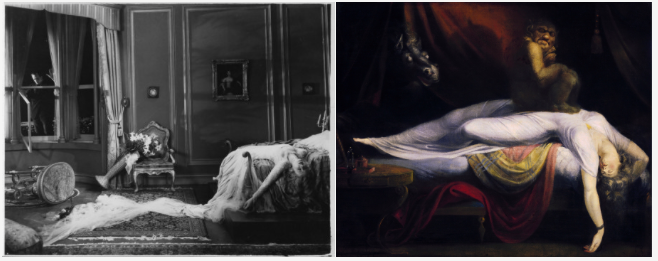Aspects of Frankenstein
Last night the Stanford Theater offered a double bill of Frankenstein and Bride of Frankenstein, James Whale’s twin masterpieces. I had not seen them together in a theater since I was sixteen, and I’m so glad I went. Here are some notes:
Still got it!
Early on in Frankenstein, Henry Frankenstein is sent home and his mentor promises to “painlessly” destroy the monster. Alone in the operating room the professor writes in his notebook that the monster is requiring increased doses of sedative, that the dissection will begin immediately.
He rolls up his table of surgical knives, selects four scalpels, and turns to address the still-breathing subject. We see the monster’s eyes flutter, but the would-be vivisectionist does not notice, then the monster’s hand silently rises behind him,
…and a woman screamed out loud in the theater.
Perfect.
I am a [censored]
The Stanford Theater print of Frankenstein restores this censored dialogue:
VICTOR: "Henry, in the name of God!"
HENRY: "In the name of God? Now I know what it feels like to BE God!"
This introduces all sorts of interesting problems. If Henry is God, what is the Monster? Praetorius delightedly invokes this dilemma in his toast with the Monster in Bride of Frankenstein:
“Here’s to Gods and Monsters.”
If you are a God…what am I? If I am your child, what are you?
In Frankenstein, the Monster - mute at this stage of the proceedings - can only confront his creator in silent rage.
We’re not so different etc.
Body Horror
He came in through the bedroom window
Bride of Frankenstein is usually read as the Queer text, but in Frankenstein the spurned monster stalks the virgin bride of his creator on their wedding night. Whale gives us this fleeting image, a moment after he enters and a moment before hilarity ensues:
I just feel like something more is going on here
Try to keep up
In the aftermath we are in a near facsimile of Henry Fuseli’s painting The Nightmare (as noted here). A nightmare, of course, was the genesis for Mary Shelley’s original work.
Probably just a coincidence.
The Circle is Complete
In the original novel, Mary Shelley’s introduction has strong parallels with her description of the creation of the monster. In Bride of Frankenstein Mary Shelley is played in the prologue by the estimable Elsa Lanchester. Lanchester also (credited as “?”) plays the Bride. And in the end the Monster, who now knows the difference between good and evil, chooses self immolation for her, him, and their demented creator Doctor Praetorius, allowing Viktor Frankenstein escape with his bride. So, two weddings: one a new start, the other a funeral.
It’s almost as if there’s some kind of subtext here
Crazy Bank
These guys were absolutely printing money. Bride of Frankenstein made $2 million (about $35 mm today) on a $400,000 budget. Both Whale and Karloff got $2,500 a week on the film ( $50,000 today), about triple what, say, Tyrone Power was getting.
Well done
They made exploitation films for the ages, challenged mainstream society’s double standards, foreshadowed a million medical horrors to come, and created an enduring aesthetic. It holds up, almost a hundred years on.
Credit: Universal Weekly, 1935







